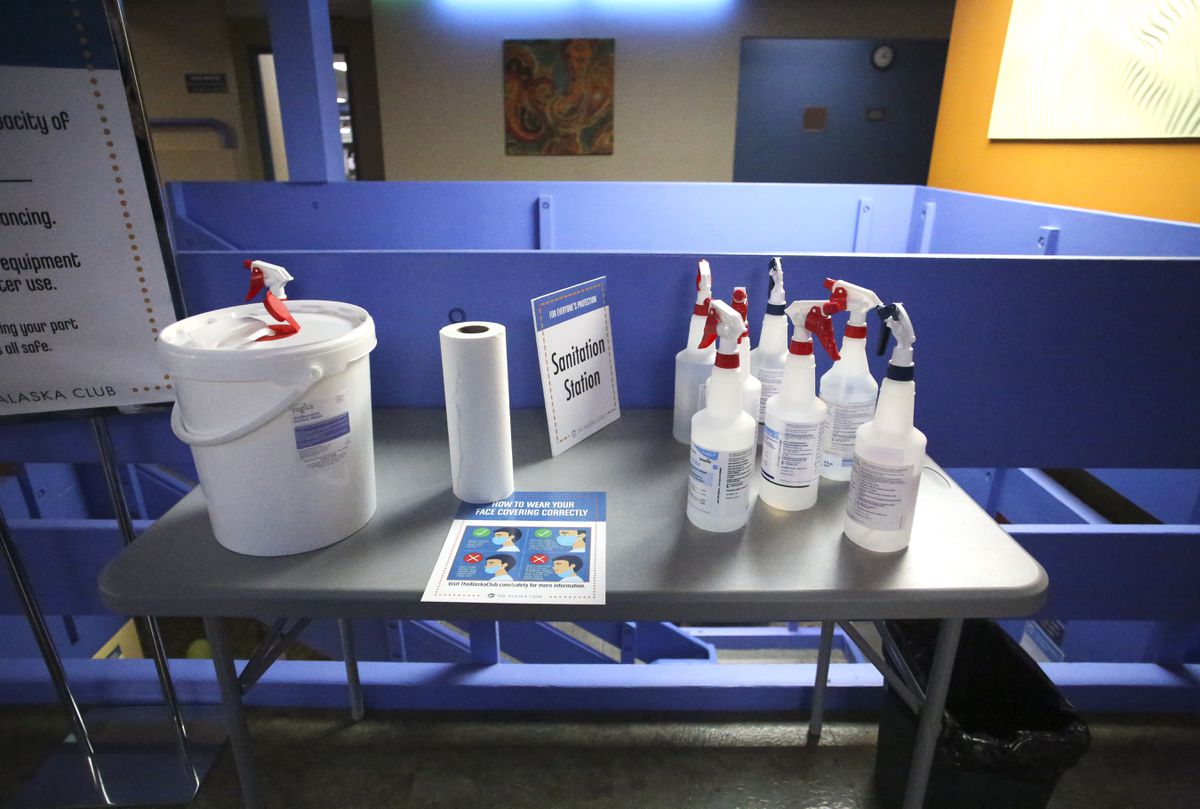
Calls ticked up in April, May and June, compared with last year. And the Alaska Poison Center saw nearly 200 calls specifically related to household cleaning products between January and June, the state health department said.
It’s hard to say definitively that the increase in calls was caused by the pandemic, said Rob Hendrickson, medical director for the Alaska Poison Center. But right around March and April, calls started going up, he said.
“We are all being more careful with cleaning, and we all have more hand sanitizer and more bleach and more disinfectants around the house,” Hendrickson said.
Half of the calls tied to cleaning products involved kids who were under 6 years old — most often involving bleach and hand sanitizer. Roughly a third of all household cleaning product calls centered around bleach exposures.
Between May and August, half of all visits to Alaska emergency departments for household poisonings involved children under 6 years old. Hendrickson said they’ve seen a trend in the calls with young children getting into hand sanitizer.
Another pattern emerging from the calls involves people mixing two chemicals together, which can sometimes create a reaction, Hendrickson said. For example, when bleach and ammonia mix, it produces a toxic gas that can act as an irritant.
The numbers reported by the agency probably underestimate how many people were exposed to poisons recently, since they only reflect those times when someone made a call to the center, the state health department said.
“Practically every poison center has the exact same thing,” Hendrickson said. “There’s no epidemic of hand sanitizer problems, but everyone is seeing an increase in bleach and sanitizer exposures.”
Though he didn’t have specific data, Dr. Daniel Safranek, medical director at the emergency department of the Providence Alaska Medical Center, said it’s reasonable to say the emergency department has seen a slight uptick in visits related to increased use of household sanitizing products.
But according to Cary VanDyke, who manages the trauma program at Providence, from May to August, there weren’t any hospital admissions for people under the age of 18 related to household cleaners and disinfectants — though that doesn’t include people who might have gone to the emergency department and been discharged.
Since the beginning of the COVID-19 pandemic, health officials stressed a variety of ways to cut down on risk related to the illness, including wiping down surfaces, and also maintaining distance from other people and washing hands.
Experts think COVID-19 is primarily spread between two people through respiratory droplets, which are produced during a cough, sneeze or conversation.
Surface-to-surface spread of the coronavirus, from groceries or mail, isn’t the primary way the virus is spread, said Sara Penisten Turcic, a registered nurse and the Safe Kids Alaska coordinator at Providence.
“Regular hand washing and, what we are seeing through the research, is that really wearing masks and avoiding respiratory droplet exposure is really our primary mode of transmission prevention," she said.
When it comes to disinfecting household surfaces, she said it just comes down to what people are comfortable with. But, if someone in the house does have COVID-19, additional sanitizing could be appropriate as well as keeping the person isolated and wearing masks, she said.
In addition to household cleaner concerns, a group of hand sanitizers was recently recalled because they contain methanol, which is potentially life-threatening if it’s swallowed, the state health department said.
Hendrickson said he doesn’t expect problems with the sanitizers if people are using them on their hands, but it becomes dangerous if people misuse them or kids drink them.
“If you’ve been using it as directed for the last couple of weeks and then you find out it’s got methanol, we’re going to suggest you get rid of it but it’s not something we expect you to absorb and get methanol toxicity,” Hendrickson said.
Besides getting rid of harmful hand sanitizers, Penisten Turcic said there are a few other important things to keep in mind with disinfectants and cleaners.
“The largest single action that adults can take is to store cleaning and disinfecting products up and out of reach of small children,” she said.
She recommended that people post the number for poison control — 1-800-222-1222 — in their house.
Hendrickson said it’s also important to use the product the way it’s supposed to be used.
“If the product says it should be used on countertops, then use it on countertops, but don’t use it on your skin because it might be really irritating,” Hendrickson said. “If it says use a teaspoon, don’t use a cup.”
• • •
"poison" - Google News
September 27, 2020 at 09:40PM
https://ift.tt/337MPoI
Poison control calls rise as Alaskans rely more on disinfectants and cleaning products during pandemic - Anchorage Daily News
"poison" - Google News
https://ift.tt/2W5dbUB
https://ift.tt/3ceUkwc
Bagikan Berita Ini

















0 Response to "Poison control calls rise as Alaskans rely more on disinfectants and cleaning products during pandemic - Anchorage Daily News"
Post a Comment